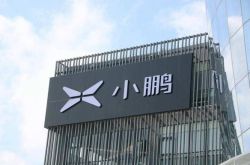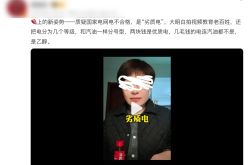Qingdao Metro Ignites the DeepSeek Moment for China's Urban Rail Transit
![]() 05/06 2025
05/06 2025
![]() 775
775
In the fiercely competitive landscape of vertical large models, Qingdao has secured a prominent position.
On April 25, during the inaugural day of the Smart Urban Rail 2025 Qingdao on-site conference hosted by CAMRT and organized by Qingdao Metro Group, China's first large AI model tailored for the urban rail transit industry was officially unveiled. This groundbreaking technological advancement will bridge the existing gap in AI applications within the urban rail sector.
Notably, on the same day, during the 20th collective study session focused on strengthening AI development and regulation, the Political Bureau of the Communist Party of China Central Committee emphasized the need to foster deep integration of AI technological and industrial innovations. It called for the establishment of a collaborative innovation system led by enterprises, supporting the transformation and upgrading of traditional industries, and paving the way for strategic emerging industries and future industries.
This signifies that the reshaping of various industries by AI will accelerate, making the deep integration of smart urban rail with AI a critical question for the industry to address.
The launch of Qingdao Metro's urban rail large model can be deemed the "DeepSeek moment" for China's urban rail industry, setting multiple precedents within the sector.
In terms of technological innovation, its fully decoupled design and full-stack autonomous path have established industry standards, mitigating reliance on general models.
In model innovation, through "accompanying research and development" that deeply integrates business needs, it propels AI from being a mere "tool aid" to a "decision-making core," exemplified by the power supply agent that automates work order dispatch and risk warning.
In ecosystem building, it encourages upstream and downstream enterprises like Extreme Vision and H3C to participate in technological iterations, fostering a positive cycle where "technology nourishes scenarios, and scenarios expand technology."
For Qingdao, AI and rail transit equipment, as strategic emerging industries prioritized by the nation, are key areas of focus within the city's "10+1" innovative industrial system. Qingdao has identified the urban rail large model as one of the vertical large models for pivotal development.
Building upon previous smart urban rail initiatives, Qingdao Metro's introduction of the urban rail large model not only underscores its commitment as a state-owned enterprise to drive industrial innovation in Qingdao but also paves the way for the next phase of smart urban rail development nationwide.
In the future, with the promotion and replication of Qingdao Metro's vertical large model, TACS, and other technological achievements across the country, Qingdao Metro will become a new emblem of Qingdao's emerging productive forces.
1
The Smart Urban Rail 2025 Qingdao on-site conference, hosted by CAMRT and organized by Qingdao Metro Group, was replete with highlights.
An important detail is that the conference's opening day was held at the Zhuamashan depot in the West Coast New Area, which serves as the depot for Qingdao Metro Line 6, renowned as the "smartest train".
Qingdao Metro Line 6 holds special significance in the national urban rail industry. It is the country's first demonstration project for a fully autonomous operation system (TACS) and the first line nationwide to adopt fully functional, full-scenario, and all-element smart stations.
Building upon the smart urban rail infrastructure of Line 6 Phase I, Qingdao Metro commenced formulating a new-generation AI-based smart urban rail plan in November 2023. This plan integrates the large model into the smart urban rail technology system, constructs an intelligent computing center, AI platform, and model evaluation platform, conducts data governance, develops the Qingdao Metro large model and agents, and enhances the quality and efficiency of urban rail operations while reducing costs.
CAMRT's choice to hold the exchange meeting to summarize and discuss the five-year progress since the release of the "China Urban Rail Transit Smart Urban Rail Development Outline" at this venue and to launch the large AI model for the urban rail industry is a testament to the operational achievements of Line 6 and Qingdao Metro's smart urban rail construction.
April 26 also marked the first anniversary of the official opening of Line 6, and Qingdao Metro systematically summarized the relevant operational data:
Among the 16 core industry indicators, 12 achieved "zero triggers," and 13 indicators reached or surpassed the optimal level of the line network. Operational costs such as labor, energy consumption, and maintenance were significantly reduced, saving approximately 91.8 million yuan annually. In terms of safety, the failure rate was reduced by approximately 51%, reliability increased from 99.99% to 99.9996%, and the detection rate for high-risk items exceeded 98%. In terms of quality, services were more precise, proactive, and considerate, and maintenance quality was more reliable with no omissions or errors. In terms of efficiency, 58% of the original manual maintenance work was replaced by intelligence, and production operation efficiency and emergency response efficiency were increased by 30%. In terms of benefits, 17.69 million kWh of electricity was saved annually, accounting for 30% of Line 6's annual total electricity consumption.
Another noteworthy detail from the first day of the on-site conference was the special attendance of relevant officials from the Industrial Development Department of the National Development and Reform Commission.
Amid the country's vigorous promotion of the "two news" and "two weights" strategies, the urban rail transit industry, which concurrently serves the dual missions of improving people's livelihoods and supporting development, will also welcome new investment opportunities.
Currently, national urban rail construction is gradually transitioning to a stage that emphasizes both construction and operation, with operation as the leading factor. This presents challenges such as high operating costs and significant safety pressures.
This means that, compared to the substantial investments during the previous phase of urban rail construction, the intelligent transformation of existing lines, including the development of deeper vertical large models, will become a key focus of future investments in the urban rail industry.
2
Specifically, the large AI model for the urban rail industry released by Qingdao Metro this time, featuring a scenario-driven, data-driven accompanying research and development model, boasts four major innovative highlights: fully decoupled design, full-stack autonomy, integration of large and small models, and data thinking chains.
Among these, in terms of data thinking chains, the large AI model for the urban rail industry addresses the pain point of data scarcity in traditional vertical large models. Relying on the vast data foundation of Qingdao Metro and even the entire national urban rail industry, it forms a high-quality dataset for the urban rail industry from over 14,000 industry documents and over 197,000 Qingdao Metro documents. This enhances the model's professional capabilities and accuracy, increasing the credibility of its output results.
In terms of the integration of large and small models, drawing inspiration from the MOE architecture (triage and medical treatment), a hybrid expert large model comprising one large model and 18 agents has been constructed. This model can comprehensively cover 159 rail transit operation scenarios.
Moreover, with over 70 billion model parameters, the large model's learning ability and applicability are significantly guaranteed, providing advantages in processing data items such as generated text, language, images, and videos.
It is understood that Qingdao Metro has completed the research and development of version 1.0 of the vertical large model and the first-generation large model, model evaluation, and the pilot operation of four agents for power supply, rolling stock, electromechanical systems, and smart stations on Line 6. These initiatives empower business areas such as equipment maintenance, passenger services, operation organization, and emergency response, significantly reducing operational processes and fault handling time.
From a practical perspective, with the enrichment of application scenarios and training on high-quality data, the large AI model for the urban rail industry will propel the construction of smart urban rail into a stage of "human-like" active thinking. This will make it more "intelligent" and capable of efficient analysis and guiding decision-making.
Taking the smart operation and maintenance scenario as an example, previous smart operation and maintenance of power supply were primarily based on BIM digital twin technology, which could complete one-click inspection of substations across the entire line in 20 minutes. After applying the large model, if equipment trips, the agent can proactively list operational risk points and generate disposal suggestions and material lists. This reduces manual operation processes from 26 steps to 8 and increases disposal efficiency by over 70%, further enhancing safety assurance capabilities.
According to estimates, after the Qingdao Metro large model application system is fully established and covers all scenarios, it is expected that Qingdao Metro's operational efficiency will increase by over 40%, proactive passenger services will increase by over 60%, production operational processes will be reduced by over 60%, and costs will be reduced by over 30%. By 2028, the 506-kilometer line network is anticipated to achieve annual operational cost savings of over 1 billion yuan.
3
For China's urban rail industry, Qingdao Metro's contribution extends beyond the innovative development of its urban rail large model. More importantly, it lies in establishing a joint innovation body for the integrated development of AI and the urban rail industry across the entire sector.
As early as November 2023, Qingdao Metro Group, adhering to the organizational principles of "owner-led, internal cohesion and external connection, and ecosystem collaboration," hosted a special meeting on AI implementation. This meeting was jointly organized with the group and its subsidiaries, Shandong University, Beijing Urban Construction Design & Development Group Co., Ltd., ZTE Corporation, Sugon Information Industry, H3C, Extreme Vision, Huawei, Beijing Guoxin Huishi, and other 19 units. The meeting aimed to research and establish the "Qingdao Metro AI Joint Innovation Body," gathering over 300 technical experts and AI trainers to form a research and development system of "joint innovation body + laboratory + task force" to execute the "rail transit + AI" 1123N action plan.
Taking Extreme Vision as an example, this AI algorithm marketplace, convinced by Qingdao's abundant application scenarios, relocated its headquarters from Shenzhen to Qingdao. It plays a leading role in Qingdao Metro's "vertical large model research and development" work.
According to Chen Shuo, co-founder of Extreme Vision, in the preliminary planning and design stage, they participated in the scheme design for the AI platform, multimodal large model, agents, and other sections. In the pre-experiment stage, they proposed and implemented the "AI + framework protection action disposal process optimization." In terms of research and development output, they successively led and participated in the research and development of the data annotation platform, service guide agent, power supply agent, smart station agent, etc. They also collaborated with Qingdao Metro to summarize and document the scientific and technological achievements, innovations, experiences, methodologies, standards, and norms during the process. Regarding Qingdao Metro's proposed "accompanying" research and development model, the company has successively invested over 40 technical staff in various positions.
The power supply agent currently operating within the urban rail large model was developed with the participation of Extreme Vision.
The launch of the urban rail large model marks just the beginning. Its replication and promotion in more cities and broader application scenarios in the future will also present more development opportunities for relevant enterprises, including Extreme Vision.
According to estimates, the cost of smart transformation for a single urban rail line is approximately 200 million yuan, with a full industry chain scale of nearly 100 billion yuan, indicating vast prospects for the industrialization of AI.
Furthermore, the operational efficiency gains brought about by smart transformation will significantly reduce the cost recovery cycle.
Taking Qingdao Metro Line 6 as an example, considering the current system maintenance and operation costs, as well as the benefits of labor cost reduction, maintenance cost reduction, and energy saving, after all functions are realized, the smart operation and maintenance system for Line 6 vehicles will save 13.69 million yuan per year, with a cost recovery period of 1.7 years.
Moreover, due to its fully decoupled design, with computing power, platform, and large model completely independent, the urban rail large model launched by Qingdao Metro possesses the ability to deploy better models in the future. This is akin to being able to update and upgrade at any time while seamlessly connecting and adapting to existing smart urban rail constructions in various regions.
Additionally, the urban rail large model can be applied to equipment operation and maintenance in industrial parks, ports, power, and water utilities, such as passenger services at airports, production line operation and maintenance in the equipment manufacturing industry, operational services for operators, and railways, empowering various industries. This represents an even broader market potential.





